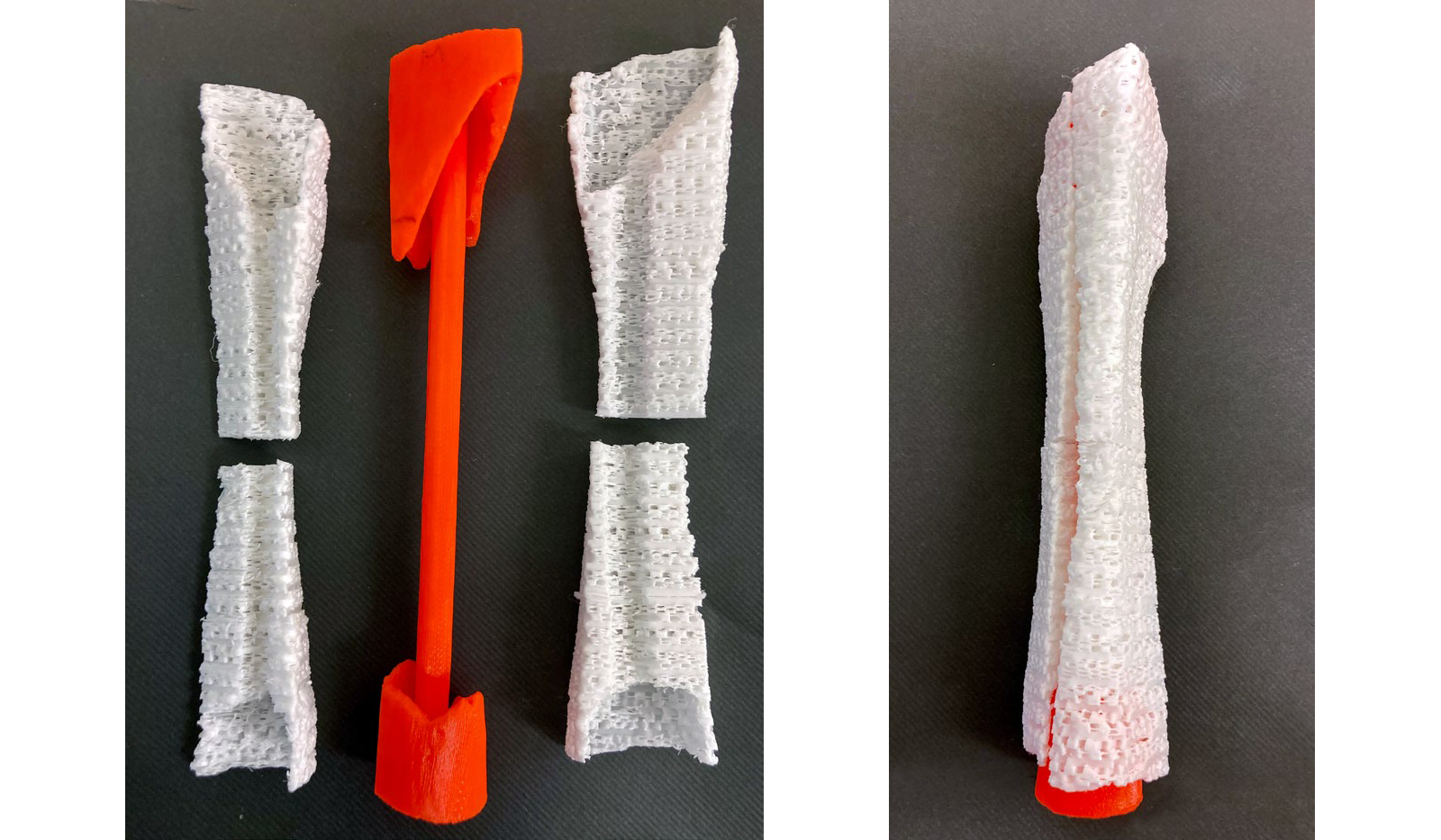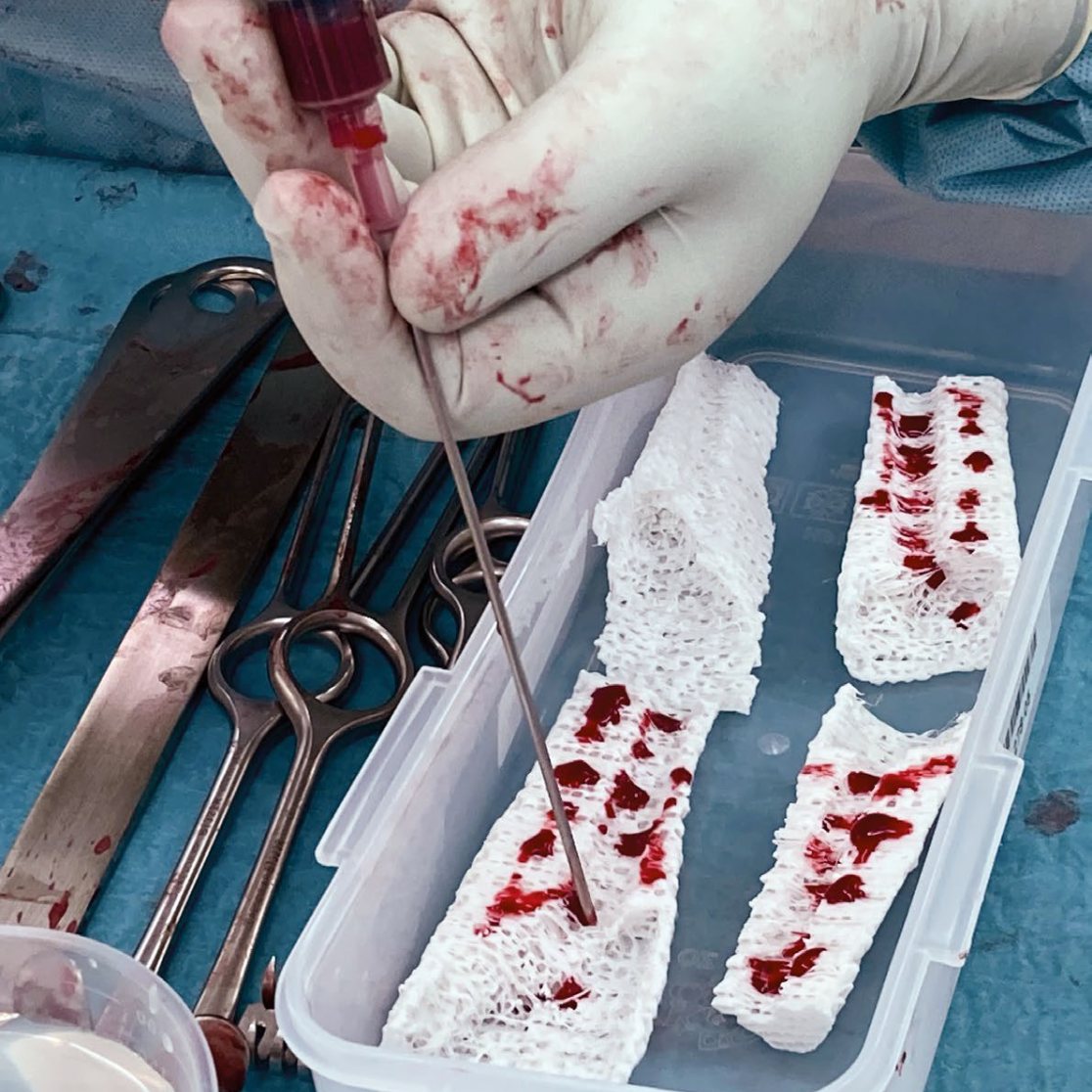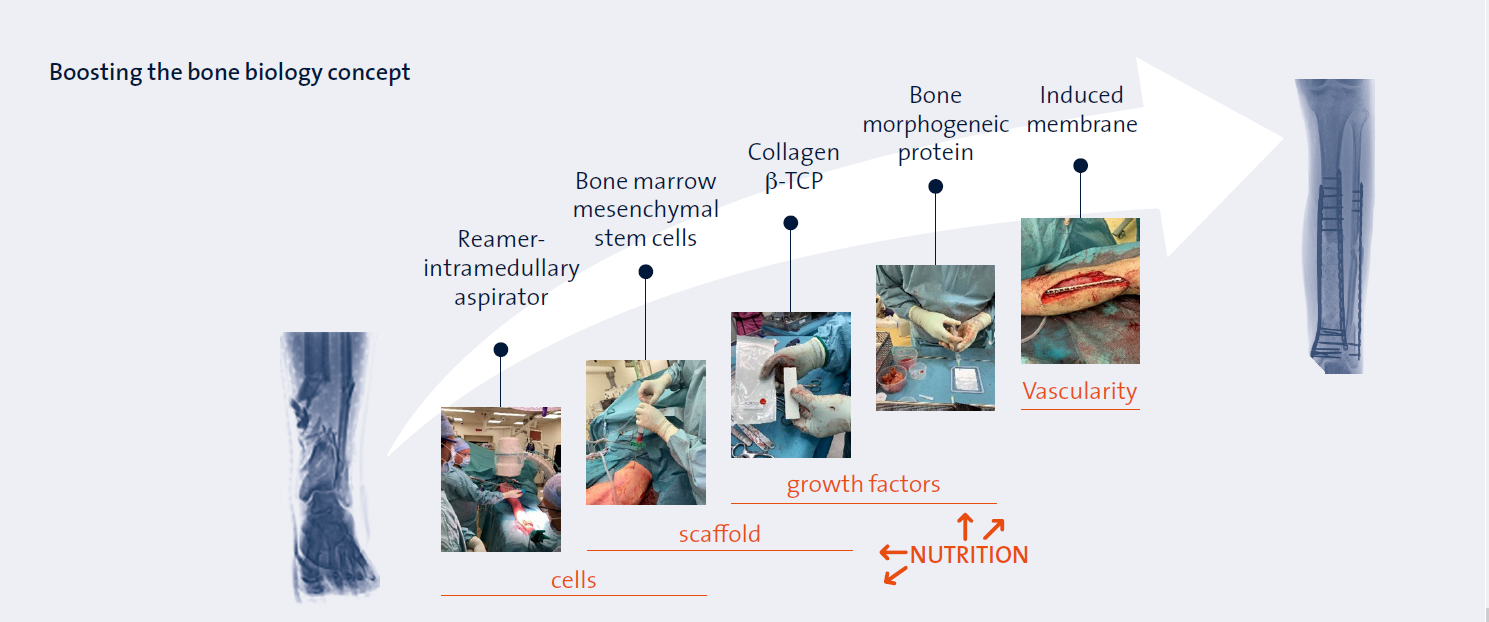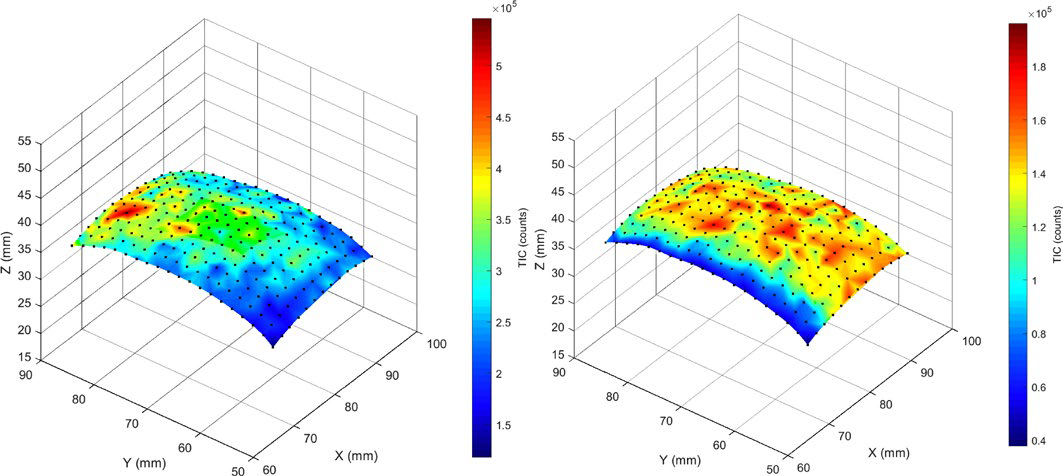How to solve a traumatic bone defect
Division 3: Respiratory & Age-related Health
Department of Surgery, section Trauma surgery
Background
Yearly 175,000 persons suffer from a fracture in the Netherlands. Of these patients, 10% have a fracture healing that is halted, leading to a non-healed fracture or non-union. In high-risk patients, this risk can increase up to 46%. This arrested fracture healing, in which a defect between the fracture fragments remains, is the key subject of research of the trauma surgery group. In this defect the regeneration of the interfragmentary tissue is not sufficient. In case of a large critical size bone defect the requirement for these metabolic processes are even higher and the risk of non-union increases parallel to the defect size.

Previously treatment was aimed at the pentagon concept augmenting the non-union tissue during surgery using a combination of five elements: supplementation of bone cells, scaffold and growth factors with optimized mechanical stability and vascularity. The new hexagon model uses nutritional intervention prior to surgery to optimize metabolic conditions of the fracture or non-union tissue for regeneration. This nutritional intervention is designed a short-term nutritional intervention using a combination of specific amino acids, electrolytes and vitamins. The concept to boost the bone biology is to use nutrition to optimize each metabolic component important in fracture healing; mesenchymal stem cells and osteoblasts, collagen bone stroma as scaffold, growth factors and vascularity.
Who is involved?
The NUTRIM research team of the traumasurgery group consists of two P.I.s (Taco Blokhuis and Martijn Poeze), together with 2 postdoctoral researchers and 16 PhDs.
Major breakthroughs
A key finding is the discovery that nutritional supplementation of specific amino acids is indeed able to increase the fracture regenerative capability with a reduced risk of non-union [1-5] in a validated murine delayed fracture healing model [2]. Previous studies in patients indicate a decreased availability of amino acids both in the non-union tissue and also in the bone marrow distant from this non-union site, as marker of nutritional depletion of the bone marrow [9]. In other mechanistic studies citrulline was found to be a more important amino acid than arginine for increasing vascularity and regeneration during conditions of increased inflammation [10,11]. Finally, the inflammatory phase of the fracture hematoma was demonstrated to be key in the sequential steps of regeneration of bone [12-15].


Users and collaborations
Together with the cBITE group (head Prof. dr. Martijn van Griensven) of the MERLN institute, a newly developed 3D printed bone defect cage (with polycaprolactone and tricalciumphosphate) was successfully implanted in a first-in man study in patients with critical size defects (see picture above) together with bone marrow stem cell concentrate and autologous bone graft. These cages can be used for increased bone regeneration capabilities, thereby increasing the maximum size of the defect that can be treated (example above demonstrating a 15-cm bone defect). Further evaluation of fracture healing is performed using high-resolution quantitative CT scanning together with the group of Prof. dr. Joop van den Bergh. Within the Chemelot InScite consortium, the WISE project aims at developing an interponate for posttraumatic arthritis. Together with the department of movement sciences (Dr. Kenneth Meijer) a number of studies are carried out on gait kinematic abnormalities in patients after foot- and ankle-trauma, as clinically relevant outcome parameter.

3D visualization of m/z distributions
Together with the M4I institute (head Prof. dr. Ron Heeren) techniques for intra-operative evaluation of bone vitality using laser-assisted mass spectrometry are developed (see figure displaying intensity of two different molecular masses (m/z value) using 3D robotic surface scanning and metabolic profiling).
Scientific impact/Research quality
The scientific quality of the research is apparent from the publications in relevant and high impact journals (see below selection of papers), including review articles [4,15], as well as research grants obtained (ZonMW doelmatigheidsubsidies (4x), Horizon 2020 grants: Eurostars, EITHealth; and a Chemelot Inscite grant).
Selection of publications
- Meesters DM, et al. Enhancement of fracture healing after citrulline supplementation in mice. Eur Cell Mater. 2020 Mar 20;39:183.
- Gröngröft I, et al. Development of a novel murine delayed secondary fracture healing in vivo model using periosteal cauterization. Arch Orthop Trauma Surg. 2019;139(12):1743.
- Hofman M, et al. Effect of neurokinin-1-receptor blockage on fracture healing in rats. Sci Rep. 2019;9(1):9744.
- Meesters DM, et al. Malnutrition and Fracture Healing: Are Specific Deficiencies in Amino Acids Important in Nonunion Development? Nutrients. 2018;10(11):1597.
- Meesters DM, et al. Deficiency of inducible and endothelial nitric oxide synthase results in diminished bone formation and delayed union and nonunion development. Bone. 2016;83:111.
- Wijnands KA, et al. Citrulline Supplementation Improves Organ Perfusion and Arginine Availability under Conditions with Enhanced Arginase Activity. Nutrients. 2015;7(7):5217.
- Hofman M, et al. Improved fracture healing in patients with concomitant traumatic brain injury: proven or not? Mediators Inflamm. 2015;2015:204842.
- Hannemann PF, et al. The effects of low- intensity pulsed ultrasound and pulsed electromagnetic fields bone growth stimulation in acute fractures: a systematic review and meta-analysis of randomized controlled trials. Arch Orthop Trauma Surg. 2014;134(8):1093.
- Wijnands KA, et al. Impaired fracture healing associated with amino acid disturbances. Am J Clin Nutr. 2012;95(5): 1270.
- Wijnands KA, et al. Citrulline a more suitable substrate than arginine to restore NO production and the microcirculation during endotoxemia. PLoS One. 2012;7(5):e37439.
- Luiking YC, et al. Reduced citrulline production in sepsis is related to diminished de novo arginine and nitric oxide production. Am J Clin Nutr. 2009;89(1):142.
- Bastian OW, et al. Neutrophils Inhibit Synthesis of Mineralized Extracellular Matrix by Human Bone Marrow-Derived Stromal Cells In Vitro. Front Immunol. 2018;9:945.
- OW Bastian et al. Neutrophils contribute to fracture healing by synthesizing fibronectin+ extracellular matrix rapidly after injury. Clin Immunol, 201612;164:78.
- R van der Bel, et al. Increased osteogenic capacity of Reamer/Irrigator/Aspirator derived Mesenchymal Stem Cells. Injury, 2014;45:2060.
- Bastian O, et al. J Systemic inflammation and fracture healing. Leukoc Biol. 2011;89(5):669.
- Fracture fixation in the operative management of hip fractures (FAITH): an international, multicentre, randomised controlled trial. Fixation using Alternative Implants for the Treatment of Hip fractures (FAITH) Investigators. Lancet, 2017;15;389(10078):1519.
Societal impact
- We have established intense cooperation with two worldwide international trauma care societies (AO (Allgemeinschaft fur Osteosynthesenfragen) Foundation and OTC (Osteosynthesis and Trauma Care) Foundation) for implementing specific trauma related products.
- For our work on autografting techniques we received for example the 2020 Innovation Award of the AO Foundation
- We established an outpatient clinic for patients with a non-union with nationwide reach. www.1limburg.nl/nieuwe-poli-mumc-voor-botbreuken-die-niet-genezen?context=default
- In addition, our work together with MERLN on the 3D printed bone cage attracted nationwide attention with interviews on RTL news and BNR news radio.
- Since most of our work is clinically oriented, patient participation is of utmost importance. Patient councils are involved in our studies and symposia aimed at improving involvement in trauma after care. www.nazl.nl/actueel/nieuws/20-jaar-traumacentrum